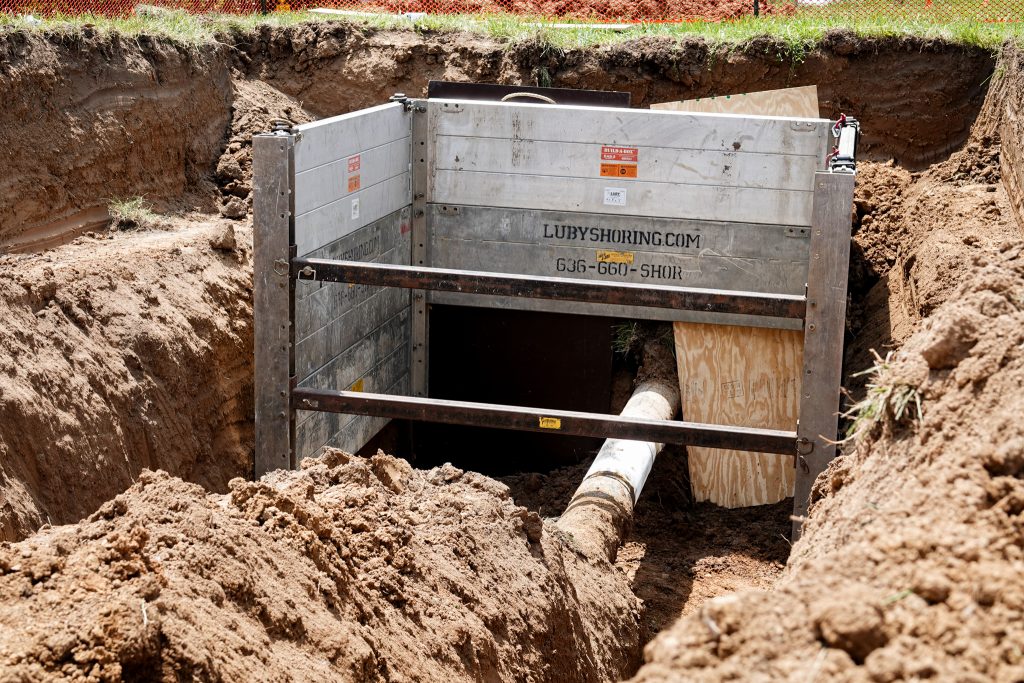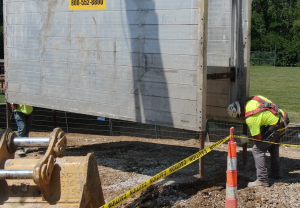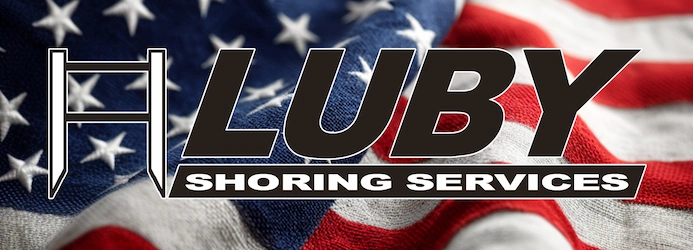Excavation work, while essential for various construction projects, poses significant risks, particularly concerning trench safety. Trench collapses can occur suddenly and with devastating consequences. Implementing proper shoring techniques is critical to ensure the safety of workers and prevent accidents. In this blog post, we’ll delve into essential shoring trench safety best practices to protect lives underground.

Conduct Site Assessments:
Before any excavation work, including trenching operations, it’s crucial to conduct thorough site assessments. This involves evaluating factors such as soil type, depth of excavation, and proximity to existing structures or utilities. Luby Shoring Services and Rental emphasizes the importance of these assessments to identify potential hazards and determine the appropriate shoring methods required for the project.
Select the Right Shoring System:
Choosing the correct shoring system is essential for ensuring safety and stability in trenching projects. Luby Shoring Services and Rental offers a range of shoring solutions, including trench shields, spreaders, manhole shields, slide rail systems, and bedding material containers, each tailored to specific trench conditions and soil characteristics. Our team assists in selecting the most suitable system to provide support and minimize risks during excavation.
 Proper Installation and Maintenance:
Proper Installation and Maintenance:
Proper installation of shoring systems is essential to their effectiveness and the safety of workers. Luby Shoring Services and Rental ensures that all shoring equipment is installed correctly by trained professionals, adhering to manufacturer guidelines and industry standards. Regular inspections and maintenance checks are conducted to identify any signs of damage, ensuring the integrity of the shoring equipment throughout the project.
Implement Protective Measures:
In addition to shoring systems, implementing additional protective measures is crucial to enhance safety on the job site. Luby Shoring Services and Rental recommends using trench shields, barricades, warning signs, and other safety equipment to prevent unauthorized access and minimize the risk of accidents. Adequate ventilation and monitoring are also emphasized, particularly in confined spaces, to maintain a safe working environment.
Provide Ongoing Training and Supervision:
Equip workers with comprehensive training on trench safety protocols, including proper shoring techniques, emergency procedures, and hazard recognition. Supervisors should closely monitor excavation activities to ensure compliance with safety regulations and address any safety concerns promptly.
Maintain Clear Communication:
Establish clear communication channels among all personnel involved in the excavation project, including workers, supervisors, and subcontractors. Regular safety meetings and toolbox talks can help reinforce safety practices and address any issues or questions related to trench shoring and safety.
Respond to Changing Conditions:
Luby Shoring Services and Rental understands that excavation conditions can change unexpectedly. We see the importance of being prepared to adapt shoring methods and safety measures accordingly. Always be ready to respond to unforeseen changes in soil stability, weather conditions, or nearby activities, ensuring continued safety and effectiveness throughout the project.

Excellent overview of trench safety practices! On our excavation projects in Yonkers, we’ve found that benching is particularly effective for managing clay-heavy soils. Even a 3–4 ft depth can shift unexpectedly, so implementing benching techniques has been crucial for maintaining stability and keeping crews safe.